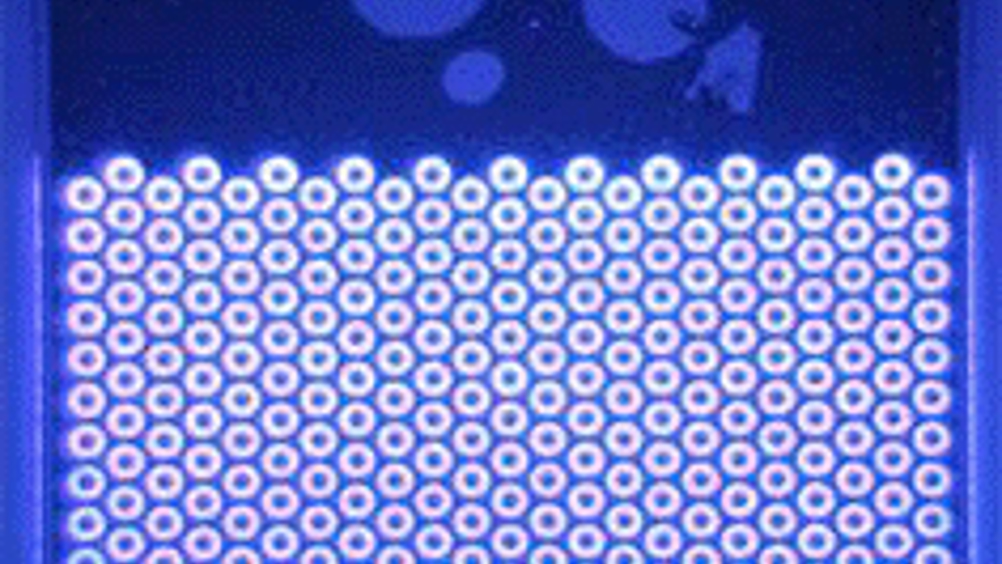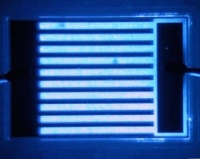Micro LEDs offer increased efficiency levels
A new Strathclyde University spin-out is developing tiny LEDs that measure just one 50th of a millimetre across but are more efficient than traditional models.

The firm, mLED, says its microLEDs have a wide range of applications from communications and printing circuit boards to neuroscience and studying biological cells.
Each device is made up of an array of up to several thousand LED elements, each just 20 micrometres in diameter. They can easily be programmed to create specific patterns of light without external components.

These patterns of light could be used in hand-held projectors or to print on light-sensitive surfaces without a mask, for example, in the production of circuit boards.
‘The power density, versatility and compactness of microLEDs makes them ideally suited for these applications,’ said Dr Jim Bonar, mLED’s chief executive.
The microLEDs are also more compact and have better beam quality and faster operating speeds than their macro counterparts.
Because the lights can be turned on and off so quickly and have a high energy output, they can also be used in communications or for measuring the ability of cells to emit light by fluorescence.
Register now to continue reading
Thanks for visiting The Engineer. You’ve now reached your monthly limit of news stories. Register for free to unlock unlimited access to all of our news coverage, as well as premium content including opinion, in-depth features and special reports.
Benefits of registering
-
In-depth insights and coverage of key emerging trends
-
Unrestricted access to special reports throughout the year
-
Daily technology news delivered straight to your inbox










Simulations show Optimal Design for Bladeless Wind Turbines
"an 80cm mast" Really? I'm short but that's only half my height! Do they mean 800cm?